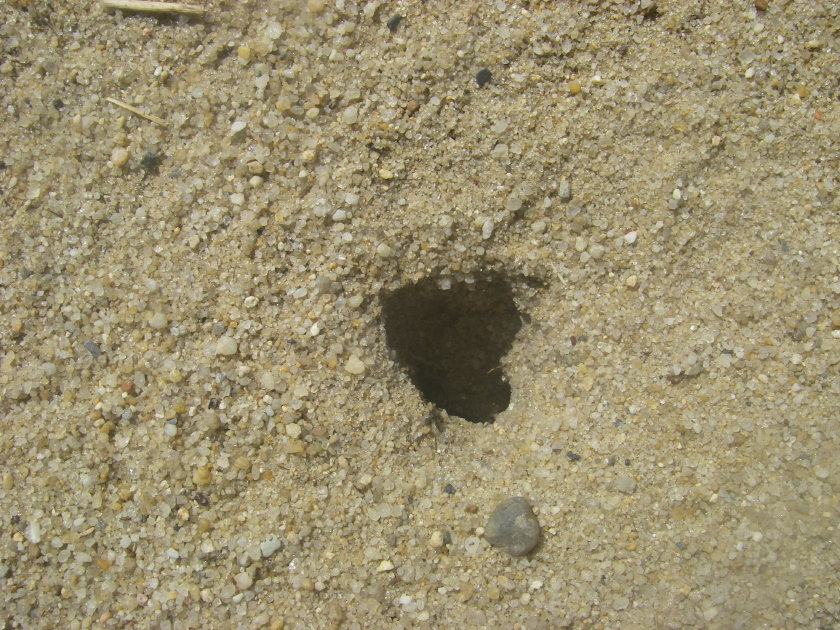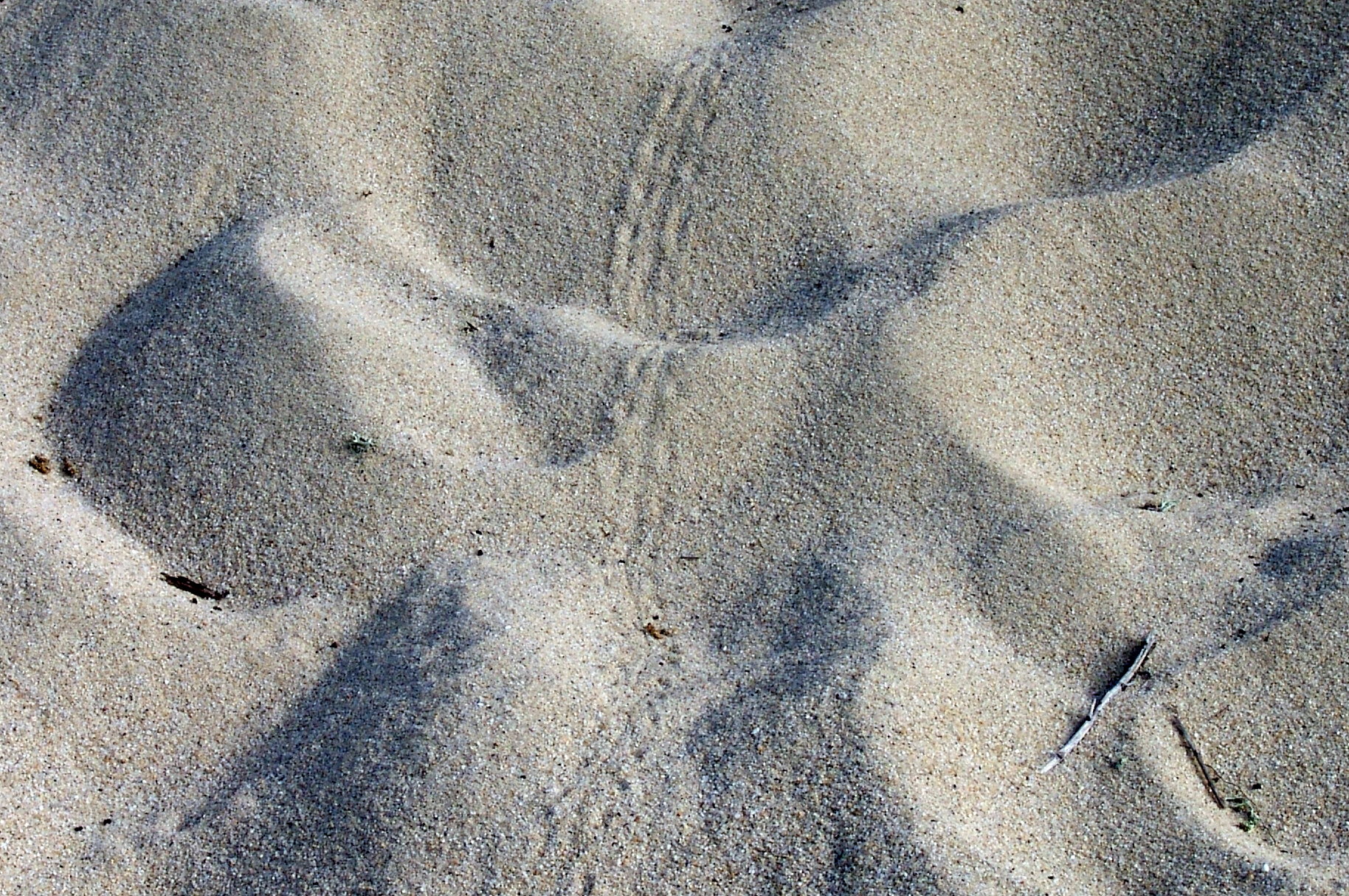Due to human development and associated pressures, some of the best remaining nesting sites for diamondback terrapins on the Outer Cape are one-lane dirt roads that abut salt marsh nursery ecosystems for hatchlings. Obviously, roadways are extremely dangerous for the female as she spends more than 30 minutes digging her nest, depositing her eggs and covering it once again. Because these compacted roadways are so hard, and her nest sculpting creates a natural arch to spread the load of vehicular traffic, the eggs appear to do fine through June, July and August as they incubate under the summer sun.
Female Terrapin Nesting in Middle of Dirt Road
But when hatchlings begin to pip and squirm about in the nest, and when one or more begins to tunnel to the surface leaving an emergence hole in the road, then the architectural integrity that served so well during incubation is compromised. Weight no longer is evenly distributed, and the egg chamber compresses and begins to collapse under the stress.Â
Emergence Hole in Middle of Marsh Road on Lieutenant Island
I discovered this little (3 gram) hatchling wedged under the lip of the nest that had been collapsing under the day’s traffic. Two of its siblings had already been crushed in the center of the egg chamber.
Premie Hatchling Distorted by Road Traffic
In addition to problems with its distorted shape, its eggshell had been invaded by fly maggots that were trying to find a vulnerable orifice to invade. I had to hand-pick these nasty predators from the tiny hatchling. Based on experience, I know that this critter will now do quite well. With a little time, some warm hydration and a bit of TLC, its shell will resume a normal shape and it should be ready to be released into the wild within a few days to a week.
Emerged Terrapin Hatchling Run Over on Marsh Road
I wish the same could be said for another sibling (above) that I found a foot outside the nest and squished in the south tire track of the dirt road. It’s a dangerous world for a turtle hatchling. Few survive to tell the tale of their harrowing youth. But with a little luck and a guardian angel or two, one turtle at a time can be saved and the whole world along with it.
Close-Up of Rescued Distorted Hatchling





